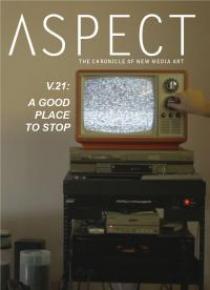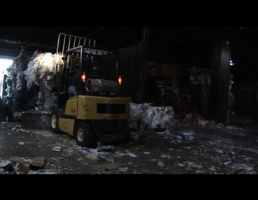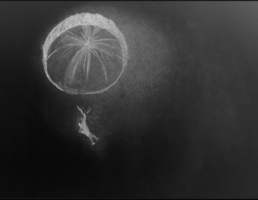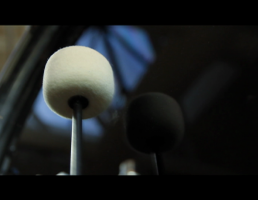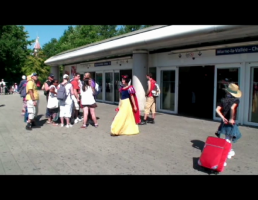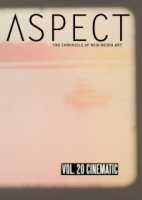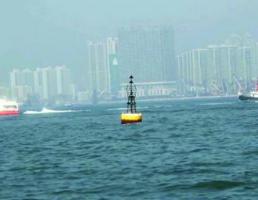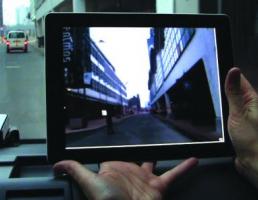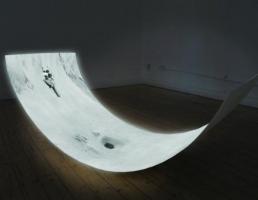Dead End
This experimental short video consists of three segments: workers loading a truck with waste paper to be shipped to China, a night view of Lower Manhattan as shot from DUMBO, Brooklyn, and a list of chief executives at the time this video footage was produced (2007-2008). Credits are a part of actual video. The 2007-2012 is considered the worst financial crises since the Great Depression of the 1930. After the introduction of Euro in 2002 and making public the cost of the war with Iraq, the U.S. dollar began to depreciate steadily in value.
Shift Change
From the series In Geolocation: Tributes to the Data Stream.
Twitter estimates there are over 340 million tweets daily, creating a vast sea of digital noise. We select locations then examine Twitter for posts that occurred recently in the surrounding area, utilizing these tweets as the spoken soundtrack. We imagine ourselves as virtual flâneurs, ethnographers of the Internet, exploring real world locations 140 characters at a time through the lives of others.
The Johnny Cash Project
A "living portrait" of the Man in Black.
From Twilight 'til Dawn
From Twilight ‘til Dawn is a video installation giving multidimensional expression to the experience of three soldiers: the filmmaker’s father, an Army paratrooper in the Vietnam era, her friend Henry, an Army paratrooper in the Second World War, and her grandfather, who never directly shared his WWII experiences with her before he died.
Pulse Machine
This electromechanical sculpture was “born” in Nashville, Tennessee, on 2 June 2012, at 6:18 PM. It has been programmed to have the average human lifespan of babies born in Tennessee on that same day: approximately 78 years.
The kick drum beats the sculpture’s pulse at 60 beats per minute, and the mechanical counter displays the number of heartbeats remaining in its lifetime. An internal, battery-operated clock keeps track of the passing time when the sculpture is unplugged.
The sculpture will ‘die’ once the counter reaches zero.
Real Snow White
The absurd logic of the "real character" and the extreme discipline of Disneyland become apparent when a real fan of Disney's Snow White is banned from entering the park in a Snow White costume. We discover that "Dreams Come True" refers to dreams produced exclusively by Disney. Anything even slightly out of control evokes fear of the real, possibly dark and perverse dreams coming true.
Forced Empathy
Forced Empathy, questions the ineluctable relationship between recording and reproduction, by addressing the fundamental constraints of visual documentation. In the video, an algorithm is used to freeze an orientation buoy in the center of the frame. The information gathered by the analyses of the buoy’s motion is acquired by the background which “stabilizes” the position of the swaying object - an exercise on the formal and technical implications of time based documentation.
HOLLYWOOD 1
“…a playful piece of metacinema, a postmodern talkie refracted through linguistic zigzags and conceptual ricochets…Sound-image-text relationships merge and diverge, relate and negate, allude and preclude, yielding puns, triple entendres, and all manner of yokes.” (V.O.) Images speak volumes. If a picture is worth a thousand words, then a five-minute video is worth a lot more than that. Tagline: A big-budget film that demands your attention!
100 Meters behind the Future
100 Meters behind the Future is a film that is being shot, acted, directed, edited, screened, watched and deleted in real time. It’s a film about delay, the expansion of cinema and the paranoia that creeps in when the mash-up of several time zones and realities escape rational explanations. The screening room is the front row of a van in which one or two people are being driven around while following the action in double view – through the windshield of the car and the screen of the device they hold in their hands.
Selected Works
Jason Dee examines the complex renegotiation of cinematic time created when increasingly obsolete and decaying film-reels are transferred to digital formats. Are the personal/collective memories of previous eras rescued by this process, or reconfigured to fit today’s perceptual models? Films both reflect and outlive their times- when they also outlive the media that recorded and stored them, what do they become, what is lost, preserved or altered?

